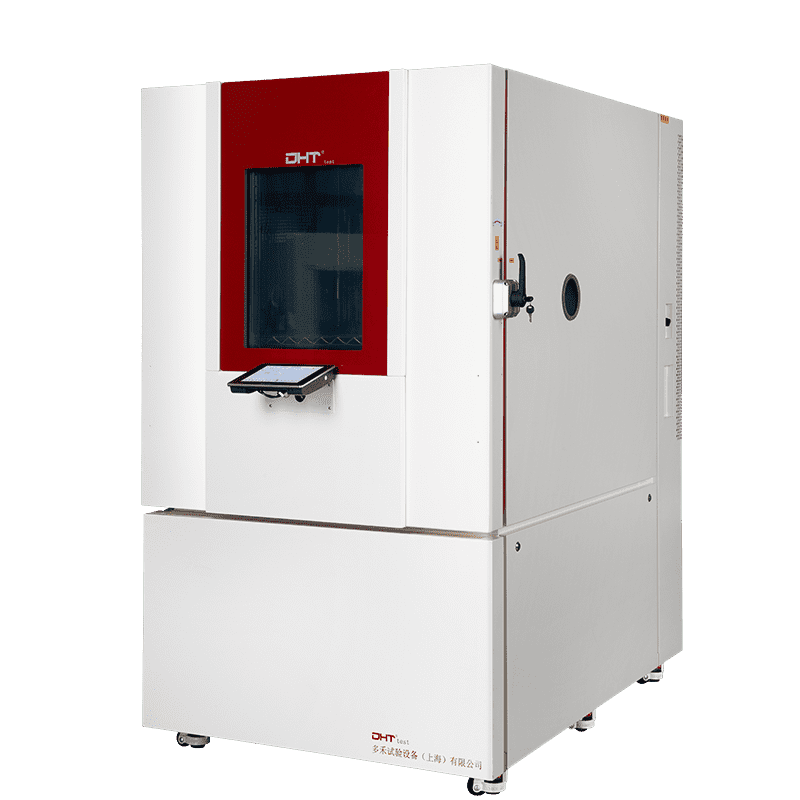Written by Robin
Senior Engineer, Doaho Test (DHT®)
In modern industrial and research settings, the environmental chamber is an indispensable “quality gatekeeper.” It simulates harsh environmental conditions to expose potential product defects in advance. However, when this “gatekeeper” itself malfunctions, the entire testing process can come to a halt, leading to project delays, increased costs, and even invalid data. Therefore, understanding common environmental chamber faults and effective troubleshooting methods is crucial for maintaining efficient laboratory and production operations.
This article systematically reviews typical fault categories and provides practical quick-check methods. Mastering these techniques can help minimize downtime and provide precise information when requesting environmental chamber repair services from suppliers, facilitating faster and more efficient resolutions.
Temperature and Humidity Performance Abnormalities: The Most Common Faults
Temperature Fails to Reach Setpoint (High or Low)
Symptoms: Slow heating or cooling rates, or prolonged operation without reaching the target temperature.
Quick Troubleshooting Steps:
- Initial Checks: Verify the setpoint accuracy. Ensure the door is fully closed and the sealing gasket is intact to prevent heat or cold loss. Check for uneven frost formation on the observation window.
- Listen and Smell: Observe whether the compressor (for cooling) and circulation fans start and run properly. Unusual compressor noise may indicate internal damage. Any burning smell may point to electrical or motor issues.
- Internal Inspection (Power Off Required): Open the distribution panel to check if main contactors or circuit breakers have tripped or show burn marks. Examine heating elements and solid-state relays for visible damage.
- Professional Advice: If a refrigerant leak is suspected (e.g., the temperature cannot reach setpoint while the compressor is running with abnormal suction/discharge pressure), immediately stop the equipment and contact a professional environmental chamber repair team. Do not attempt self-repair.
Humidity Display Abnormalities (Too High, Too Low, or No Humidification)
Symptoms: Actual humidity deviates significantly from the setpoint, or the display is stuck at 100% RH or 0% RH.
Quick Troubleshooting Steps:
- Check the Water System: Ensure the tank contains sufficient purified or deionized water (tap water is prohibited to prevent scaling). Verify that float switches are functioning correctly.
- Inspect Humidification Components: In steam-type systems, scaling may impair the humidifier after prolonged use. Verify whether heating elements in the humidifier are operating properly (avoid burns).
- Check Sensors: Humidity sensors (typically capacitive or wet-and-dry bulb types) require periodic calibration. Contaminated or malfunctioning sensors can produce inaccurate readings. Refer to the manual for sensor inspection.
- Condensation Issues: Excessive condensation inside the chamber can cause high humidity readings. Check the dehumidification system or adjust test parameters.
Control System and Alarm Faults
Modern environmental chambers are highly integrated systems, with the control system serving as the “brain.”
Frequent or False Alarms
Symptoms: Equipment frequently stops, displaying alarms such as “Over-temperature,” “Over-current,” or “Sensor Fault.”
Quick Troubleshooting Steps:
- Record Alarm Codes: Modern equipment provides unique alarm codes, which are the primary clue for diagnosing issues. Refer to the alarm code table in the manual to identify the problem area.
- Check Settings: Ensure protection limits are not set too conservatively, which may trigger alarms during normal fluctuations.
- Attempt Reset: Brief power fluctuations can cause false alarms. Safely power off and restart the chamber. If alarms disappear and operation is normal, continue to monitor; persistent alarms indicate genuine faults.
Program Malfunction or Unresponsiveness
Symptoms: Touchscreen unresponsive, programs fail to start or stop midway.
Quick Troubleshooting Steps:
- Restart Device: Fully power off (turn off the main breaker) and wait a few minutes before restarting. This resolves temporary software glitches.
- Check Storage Media: Devices using USB drives or CF cards may experience program loss if the media is damaged. Re-import backup programs if necessary.
- Inspect Connections: Verify that all control cables and sensor connectors are securely attached and free of oxidation.
Mechanical and Electrical System Faults
Circulation Fan Abnormalities
Symptoms: Excessive noise, unusual sounds, reduced airflow, or complete stoppage.
Quick Troubleshooting Steps:
- Power Off Inspection: After turning off power, manually rotate the fan to check for obstructions. Inspect for dust accumulation or contact with the chamber wall.
- Sound Diagnosis: Loud noise may indicate worn bearings; unusual sounds may be caused by broken blades or foreign objects.
- Electrical Measurement (Professional Only): Use a multimeter to check fan motor windings for open circuits or short circuits.
Compressor Fails to Start
Symptoms: Compressor does not run when cooling is required, or shuts down immediately after starting.
Quick Troubleshooting Steps:
- Check Delay Protection: Compressors have delayed start protection (typically 3–5 minutes). Immediate restart after power-off may not trigger operation, which is normal.
- Check Pressure: Measure high- and low-side pressures with a gauge. Abnormal pressures can trigger safety switches, preventing compressor startup. This may indicate blockages, leaks, or insufficient refrigerant, which must be addressed by qualified engineers.
Conclusion
When dealing with environmental chamber faults, a calm and systematic approach to troubleshooting is essential. The guidance provided here helps address common issues and accurately describe complex faults. However, for high-risk systems such as refrigeration circuits or main electrical components, always rely on professionally trained technicians for environmental chamber repair to ensure safety and repair quality.
Equally important is selecting a reliable chamber supplier. A top-tier supplier not only provides high-performance, stable equipment but also offers comprehensive support during pre-sales selection, installation, commissioning, routine maintenance, and emergency repair. DHT®, a trusted supplier, is renowned for its high-quality and reliable environmental chambers, capable of meeting precise testing needs across diverse R&D and production scenarios, safeguarding both innovation and product quality.
With professional maintenance, systematic management, and collaboration with a trusted supplier, your environmental chamber can operate stably over the long term, fully supporting R&D and production processes, enhancing competitiveness, and ensuring strong market performance.


